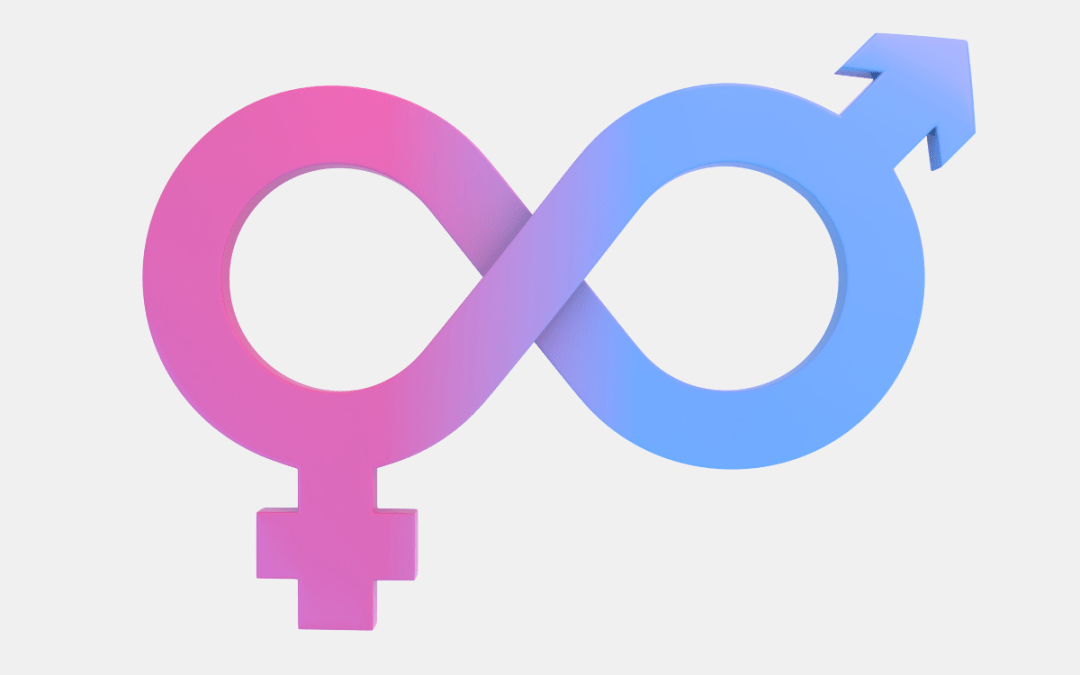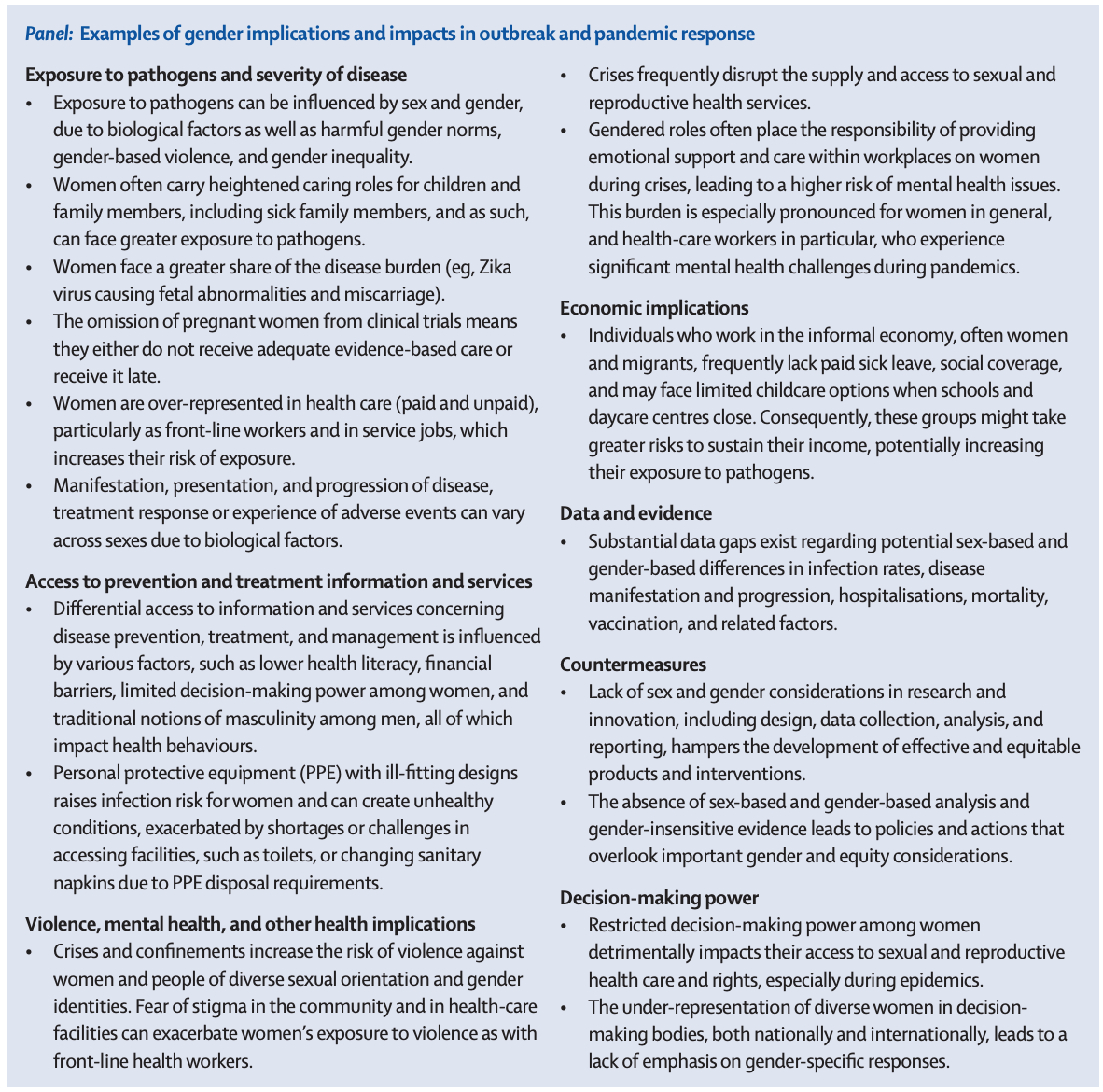A commentary in The Lancet in October 2023 calls for a “gender-responsive” Pandemic Accord to secure a “healthier, equitable future”. The need for a Pandemic Accord was established by WHO’s Member States after the “impact” of the COVID-19 pandemic. WHO states that the proposed accord will be driven by a focus on “equity” in both “access to the tools needed to prevent pandemics” and “access to health care for all people”. However, the article suggests that “despite widespread advocacy”, governments and health leaders are failing to apply a “systematic intersectional gender lens” to negotiations.
Disease and gender
The article states that multiple diseases, from HIV and influenza to our recent experience of the global COVID-19 pandemic, have highlighted the “gender implications of disease outbreaks”. Furthermore, the lack of a gender lens in epidemic responses has documented “detrimental effects”, as demonstrated in the figure below.
“Pandemics create differential vulnerabilities with particular negative implications for women in all their diversities and their health, and further exacerbate long-existing, deep-rooted gender inequalities and social injustices, more severely disadvantaging women in low-income and middle-income countries, women in marginalised communities, and women who are criminalised.”
The authors suggest that a “massive data gap” exists around sex and gender differences in infection rates, hospitalisations, morbidities, and deaths, as well as the uptake in vaccines or how effective countermeasures have been. WHO is reportedly committed to “systematically collect, analyse, and report sex-disaggregated and gender data and embed them in policy making and programme design”. Despite this, there is “insufficient availability of sex-disaggregated data” for “most of the relevant Sustainable Development Goal indicators”.
Furthermore, post-COVID-19 investigations have “paid scant attention” to the effects of intersectionality, which puts us at a “high risk” of “not embedding gender and equity considerations” into future preparedness or response efforts.
“We are at a crucial juncture: a globally binding international health instrument with long-lasting effects on future responses to public health emergencies is being negotiated in the midst of a polarising global health environment, where sexual and reproductive health and rights are under siege and women’s rights and those of people of diverse sexual orientation and gender identities are infringed and retracted.”
Concrete measures
The authors demand “concrete measures” to ensure that gender-related concerns do not “fall by the wayside” in future pandemic preparedness and response. They refer to “irrefutable evidence” that a “gender, equity, and human rights lens” brings positive and sustainable effects to health and development. Despite this evidence, we need “political will” to learn lessons and recognise the “crucial need and value” of “embedding gender as an integral and cross-cutting theme” in the Pandemic Accord.
Highlighted in the paper are “key areas” that have so far been overlooked.
Key areas
Binding commitments – needed for generating sex-disaggregated data and gender responsive evidence to guide pandemic preparedness, control, and response. Within this, investment into data systems and research processes is imperative.
Inclusive, equitable strategies, policies, and response plans that account for gender dimensions and align with human rights standard – efforts to prevent discrimination and violation of rights of marginalised groups should be scaled up. Language guaranteeing uninterrupted access to health services and prevention of and adequate response to gender-based violence should be explicit. New policies should be effectively designed to be gender transformative, address harmful norms, and strive to eliminate the root cause of gender inequality.
Participation of diverse groups in the Pandemic Accord development – effective measures result from inclusive, consultative, transparent, and participatory decision-making processes that consider the needs and perspectives of different groups. The Pandemic Accord and interim medical countermeasures platform have the potential to shape a more equitable global health agenda.
“Today, the global community stands at an open window of opportunity – a chance to show future generations that lessons learnt from the past have inspired bold steps to enshrine gender equity to shape a healthier and fairer world for all.”
How do you think these suggestions could be practically implemented within the Pandemic Accord and in subsequent global health strategies?
For more on health policy and pandemic prevention, subscribe to our newsletter here.






